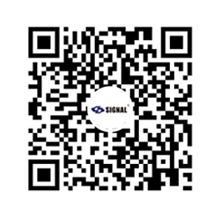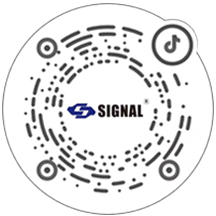SIGNAL RF coaxial connectors are common connectors used in electronic devices and communication systems. While there are many different models, a closer look reveals that almost all RF connectors have a characteristic impedance defined as 50Ω.
So, the question arises: why is 50Ω the standard impedance for RF connectors?
I. What is Impedance Matching?

Impedance matching in RF connectors means that the connector's characteristic impedance must be consistent with the impedance of the cables and devices connected to its ends. When a signal passes through the connector, if the impedance is consistent, signal energy can be transmitted efficiently; if the impedance is mismatched, it will cause partial signal reflection, resulting in power loss, signal distortion, and in severe cases, even damage to the equipment.
Therefore, impedance matching is fundamental to ensuring the stable and efficient operation of RF connectors.
II. Why is 50 Ohms Chosen as the Characteristic Impedance?

Why has 50 ohms become the impedance standard in the RF field? The core reason is its two key indicators:
1. Maximum Power Capacity: 30Ω
When the ratio of the inner to outer diameter (D/d) of the coaxial cable is approximately 1.65, the cable can withstand the maximum power. The corresponding characteristic impedance at this point is approximately 30 ohms.
2. Minimum Signal Attenuation: 77Ω
When the ratio of the inner to outer diameter (D/d) of the coaxial cable is approximately 3.59, signal attenuation in the cable is minimal. The corresponding characteristic impedance is approximately 77 ohms.
III. Practical Applications of the 50-Ohm Standard

SIGNAL RF connectors offer a wide variety: 1.85mm, 2.4mm, 2.92mm, SMA, SSMA, TNCA, N-type, etc., featuring excellent shock resistance, high power, low VSWR, high reliability, and excellent sealing. As a professional RF connector manufacturer, SIGNAL's 50Ω connectors are widely used in various scenarios:
1. Consumer Electronic Devices
Consumer electronic devices have limited space, requiring miniaturized connectors such as SMA and BNC, which meet the miniaturization and high-frequency transmission requirements of consumer electronics.
2. Cellular Communication Base Stations
For cellular base stations, N-type and TNCA are classic choices, efficiently carrying high-power signals while strictly matching the 50Ω impedance.
3. Broadcast and High-Power Transmission Systems
Broadcast and high-power transmission systems need to withstand power ranging from kilowatts to megawatts. SMA and BNC connectors, with 50Ω impedance matching, possess extremely strong high-power carrying capacity, ensuring stable transmission of broadcast signals.
4. Measurement Systems
In precision test and measurement systems, instruments need to cover the low-frequency to millimeter-wave frequency band and eliminate test errors. SIGNAL 1.85mm, 2.4mm, 2.92mm, SMA, and SSMA connectors can accurately match the requirements of different frequencies.
IV. Conclusion
In summary, the 50Ω impedance standard for RF applications is the result of an optimal trade-off between the two key engineering indicators of "maximum power capacity" and "minimum signal attenuation."
The establishment of this standard globally has greatly promoted the standardization and compatibility of RF equipment and components, and laid a solid foundation for the vigorous development of modern wireless communication.








